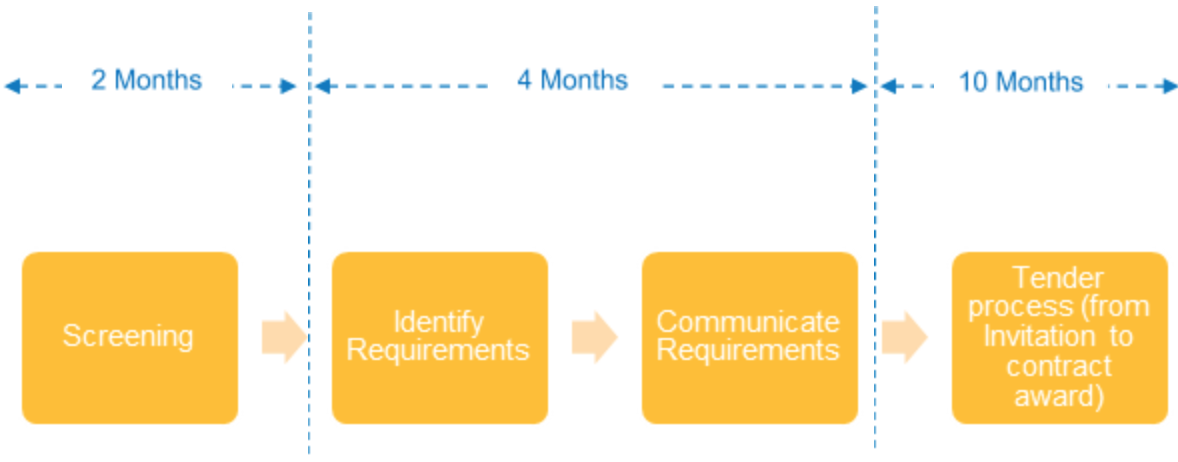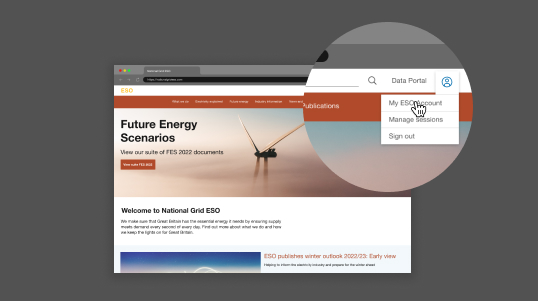The NOA High Voltage Pathfinder looks for the most cost-effective ways to address high voltage system issues created by the need to absorb more reactive power on the transmission network.
This need is the result of a drop in both minimum demand and power consumption on distribution networks.
Our first step is to develop a regional options assessment process for high voltage system issues. Then we’ll look at distribution and market-based solutions as well as the more traditional transmission-based solutions.
Voltage 2026 is focused on securing reactive power absorption capability within two regions of England.
As a result of an increase in renewable energy generation and drop in minimum demand and power consumption at the distribution level, ESO needs to adapt and find new ways to manage the changing patterns of reactive power.
Voltage 2026 will be our third long-term voltage procurement tender. Previously this would have been branded as a ‘Pathfinder’ tender. Going forward, following the publication of our BP2, these types of long-term tenders will be referred to as ‘network services procurement.’
Tender timeline
Step 1 – Identify reactive power requirements (complete)
Step 2 – Pre-tender expression of interest (EOI) and consultation period – October 2023 (complete)
During this stage ESO will publish its EOI pack inviting market participants to express their interest in participating in this Voltage 2026 tender. The EOI pack will include draft tender documents such as the draft technical specification, draft contract terms and draft connection requirements. During this stage ESO will invite the market to provide feedback on these documents prior to the launch of the tender.
As a result of any consultation feedback, the draft tender documents and requirements may be revised and updated prior to the launch of the tender. Only those who formally express their interest will be invited to the next stage.
Step 3 – Invitation to tender (complete)
Market participants who express their interest will be invited to the Voltage 2026 invitation to tender (ITT) stage. At this stage ESO will publish its ITT Pack to the registered bidders.
Step 4 – ITT tender window (in progress)
Those invited to tender will use this time to develop their technical and commercial tender submissions. Throughout the tender window ESO will continue to communicate with bidders by responding to queries and hosting webinars. Bidders invited to tender must return their complete tender submission to ESO by the tender submission deadline.
Step 5 – ESO tender assessments (Planned)
Upon receipt of tender submission ESO will assess both technical and commercial submissions alongside any counterfactual solutions submitted by Network Owners.
Step 6 – Contract award (Planned)
Market participants whose tenders are successful as a result of the ESO’s assessment will be notified and awarded contracts. Following this the successful bidders can begin work developing their solutions.
Documents and materials
Pre-tender EOI documents
Please note that these documents are subject to change as a result of consultation feedback.
| Name | Published Sort ascending |
|---|---|
| 1. V2026 instructions to tenderers - EOI | 6 Oct 2023 |
| 3. V2026 Connections approach | 6 Oct 2023 |
| 5. V2026 consultation feedback form | 6 Oct 2023 |
| 7. ARIBA guides for suppliers | 6 Oct 2023 |
| 2. V2026 technical specification | 6 Oct 2023 |
| 4. V2026 reactive power services agreement | 6 Oct 2023 |
| 6. V2026 payment calculator (illustrative) | 6 Oct 2023 |
EOI Webinars
| Name | Published |
|---|---|
| Voltage 2026 EOI technical webinar recording | 30 October 2023 |
| Voltage 2026 EOI commercial webinar recording | 30 October 2023 |
| Voltage 2026 EOI technical webinar slides | 30 October 2023 |
| Voltage 2026 EOI commercial webinar slides | 30 October 2023 |
| Voltage 2026 EOI stage generic query log V1 | 2 November 2023 |
| Voltage 2026 EOI stage generic query log V2 | 23 November 2023 |
Invitation to tender (ITT) documents
The Voltage 2026 tender is being facilitated using ESO’s internal tender platform, and therefore only a portion of the tender documents are available on this webpage.
| Name | Published Sort ascending |
|---|---|
| 10. V2026 Acceptable Security ESO Drafts | 20 Dec 2023 |
| 07. V2026 Payment Calculator V2 (Illustrative) | 20 Dec 2023 |
| 04. V2026 Technical Specification v5 | 20 Dec 2023 |
| 01. V2026 Instructions to Tenderers - ITT v3 | 20 Dec 2023 |
| 08. V2026 Reactive Power Services Agreement | 20 Dec 2023 |
| 05. V2026 Connections Approach V2 | 20 Dec 2023 |
| 02. V2026 Contract Award Criteria - Assessment Methodology v2 | 20 Dec 2023 |
| 00. V2026 Invitation to Tender Launch Notification | 20 Dec 2023 |
Tender results
Documents to follow after completion of the tender.
Seeking services from new providers
We’re looking for new providers to help us address high voltage system issues.
We’ll invite providers to submit proposals that address specific system needs via a competitive tender process. This is a collaborative process between ESO and the relevant network owners to allow us to assess the feasibility and commercial value of received proposals.
Contracts will be awarded where the tender identifies commercially competitive solutions that meet the technical requirements.
You can see an indicative process and associated timings for this process below. Please note however the timings and process for each tender will vary depending on the scale of the requirement.

Supporting the transition to a carbon-free network
The increase in renewable energy generation is changing patterns of reactive power consumption. Plus, generation is increasingly remote from demand centres.
Services that help control the voltage support our transition to renewable energy, and ultimately a zero-carbon network.
Our high-level approach to the NOA Voltage Pathfinder
Step 1
We’ll study voltage requirements across the National Electricity Transmission System (NETS) and identify specific needs. Then we’ll communicate these needs to the industry to inform potential service providers.
Step 2
We’ll engage with commercial providers and the relevant network operators to carry out any necessary technical studies.
Step 3
We’ll carry out a commercial assessment before awarding contracts to successful solutions providers.
NOA Pennines High Voltage Pathfinder results in multi-million-pound consumer savings to deliver engineering solutions needed for tomorrow’s greener grid.
We have today, 7 February 2022, announced the results of the NOA Pennines High Voltage Pathfinder. As part of introducing greater competition onto the network, National Grid ESO’s second voltage pathfinder compares market-based solutions against transmission owner solutions.
Dogger Bank Offshore Wind Farm Project 3 Projco Ltd’s converter station from its offshore wind farm and National Grid Electricity Transmission (NGET) will provide 700 MVAr reactive power capability in the Pennines regions between 2024 and 2034 following a competitive tender process.
Please see our results letter and results table for further information.
What was the requirement?
This High Voltage Pathfinder identified two areas where reactive power solutions would be needed in the years ahead. In the North East, the 200 MVAr requirement was driven by the closure of Hartlepool power station, while in West Yorkshire regions, the 500 MVAr requirement was driven by closure of power stations and changes to the electricity network.
How did we arrive at the outcome?
To deliver greatest value for the consumer and building upon the lessons learned from the first high voltage pathfinder in the Mersey region, we have compared commercial providers of reactive power to counterfactual solutions by NGET.
National Grid ESO ran a two-stage pathfinder event with the support of the TO and DNOs (Northern Powergrid and Electricity North West). The first stage consisted of technical submissions where parties received feasibility assessments of their solutions to support their bids. Following commercial submissions, National Grid ESO conducted the economic assessment as outlined in our commercial assessment methodology.
What is the impact?
The successful solutions are worth £22.5m with estimated multi-million-pound savings for the end consumer.
Julian Leslie, Head of Networks at National Grid ESO said: “These services take us another step closer to 100% zero carbon operation, showcasing Britain’s innovation in engineering and driving competition within the system, ultimately saving consumers millions of pounds.
“Reactive power capability is vital for managing voltage and being able to operate a zero-carbon system of the future so we’re excited to see that a wind farm’s onshore transmission asset will deliver reactive power for the first time in Britain.”
Timeline
The below dates were key milestones in the tender process:
- 26 March 2021: The technical tender phase 1 starts and lasts seven weeks.
- 14 May 2021: Providers submit technical proposals.
- 31 May 2021: The TO/DNO feasibility assessment starts, lasting three months.
- 4 October 2021: The commercial tender phase 2 starts, lasting six weeks, that will include commercial and Q&A webinars.
- 15 November 2021: Commercial submissions including programme capability review and contract declaration form received.
- 17 January 2022: Pathfinder participants notified of outcome
- 7 February 2022: Industry publication of results
- 1 April 2024: Contract start date.
Please contact us at [email protected] for further queries.
Documentation can be found on the Transmission Constraint Management page page.
Webinars
During the tender, we held technical and commercial webinars. Recordings are available below.
The NOA High Voltage Pathfinder – Mersey was looking for long term voltage support in the Mersey region.
Latest updates
This Pathfinder project has come to an end and lessons learned have been published. Here’s a look at how we got there.
Step 1: Publish findings (complete)
Findings from our work form part of a case study with the ENA, which looks at utilising distribution solutions.
Step 2: Launch RFI (complete)
Our first RFI for the Mersey region, and Slides and Q&A from our 1 May 2020 Q&A webinar (Q&A updated 22 May 2020).
Step 3: Launch tender (complete)
We launched a tender for long-term voltage support in Mersey, alongside a tender for near-term support.
Step 4: Publish results (complete)
Results from the tender have been published and can be seen below.
Step 5: Publish lessons learned (complete)
We published lessons learned from the end to end process on 11 December 2020. We use these to inform future tender processes. They can also be found below.
Documents and materials
Past Event Materials
Tender Documents
ST Mersey 20-21
Key Documents
ST Mersey 21-22
EOI Documents
Want to stay updated?
If you need to get in touch or need further information drop us an email.
Sign up for our newsletter and tick ‘Network Options Assessment’ to get alerts about new requirements.



